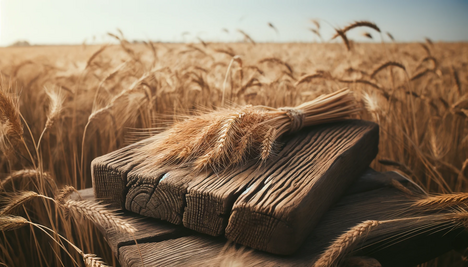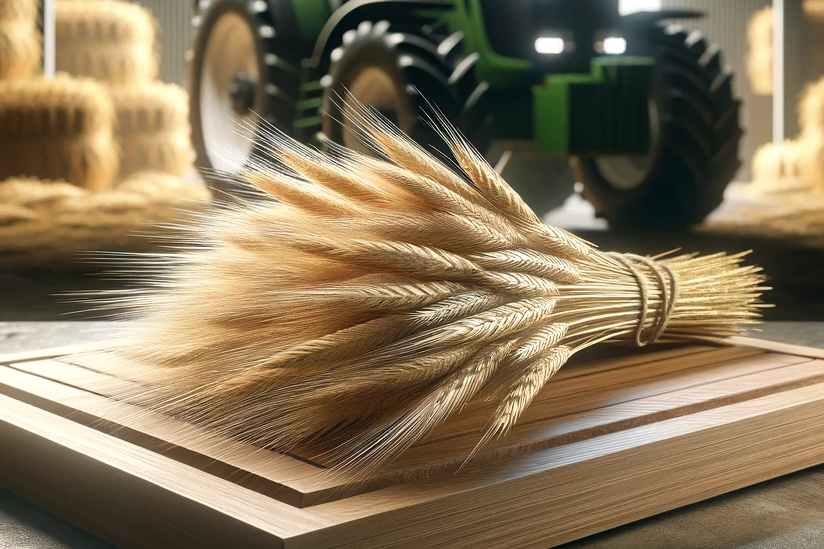Rye straw

In the world of pet care, nutrition is one of the most important topics. But while there is much discussion about the best types of food, some unconventional ingredients often go unnoticed. One such ingredient is rye straw. In this article, we take an in-depth look at rye straw, its properties and the pros and cons of using it with dogs.
What is rye straw?
Rye straw is a by-product that remains after the harvesting of rye grains. It consists of the dry stalks of rye plants. While rye is primarily grown for human consumption, the straw is used in a variety of applications, including as bedding in animal husbandry and, in some cases, as an ingredient in the diet of livestock.
Introduction to the world of rye straw for dogs
At first glance, rye straw may seem like an unusual ingredient for a dog's diet or care. However, it is important to understand that it is not used directly as food, but rather as a supplement or aid in certain situations. This article looks at how rye straw can play a role in dog care and nutrition and what it means for your four-legged friend.
Benefits of rye straw for dogs
Natural bedding and comfort
One of the main uses of rye straw in relation to dogs is as natural bedding. It provides a comfortable, soft surface for dogs to lie on in outdoor kennels or sleeping areas. Rye straw can help keep the space warm and cozy, especially in colder months.
Digestive support
In livestock, straw is sometimes used as a source of fiber to aid digestion. However, this should be used with caution in dogs. A small amount of finely chopped rye straw can occasionally be added, in consultation with a veterinarian, as a fiber supplement to promote intestinal health.
Play and activity
Rye straw can also be used as a toy or activity. Some dogs enjoy playing with or sniffing straw in a safe outdoor area, which can provide natural behavioral enrichment.
Disadvantages and precautions
Allergic reactions
Some dogs can have an allergic reaction to rye straw, which can result in skin irritation, sneezing or other allergic symptoms. It is important to monitor your dog carefully and remove the rye straw if there are any signs of allergy.
Digestive problems
Although a small amount of straw can serve as a source of fiber, it is important to know that rye straw cannot be digested and can lead to digestive blockages or other problems if consumed in excess. It should never replace a significant amount of the feed.
Risk of mold growth
Rye straw can easily become moldy if it becomes damp. Mold can be very dangerous for dogs and can lead to serious health problems. Make sure the straw is kept dry and clean to minimize this risk.
Rye straw can be a useful addition to a dog's life in certain situations and under certain conditions. It offers potential benefits such as a natural and comfortable bedding as well as behavioral enrichment. However, care must be taken to avoid negative effects such as allergic reactions, digestive problems and the risk of mold. Ultimately, your dog's welfare and health should always come first.
If you notice any signs of hypersensitivity or poisoning in your dog, you should see your vet immediately. We are not a substitute for a vet, but we try to be as accurate as possible. Every dog reacts differently and we recommend you get a second opinion or consult your vet if in doubt.
Stay healthy and take good care of your four-legged friend!😊
Similar to Rye straw
Barley straw is a by-product of the barley harvest and consists of the dry stalks of the plant that remain after the grain has been removed. It is often used in agriculture as bedding for animals,...
Oat straw consists of the stems, leaves and flowers of the oat plant, which are dried after the grains have been harvested. It contains many valuable ingredients such as flavonoids, saponins,...
Corn stover consists of the dried stalks of the corn plant that remain after the corn cobs have been harvested. It is often used as bedding in livestock farming, but is also used as a mulching...
Wheat straw is the dry stalk material that remains after wheat grains have been harvested. It is often used in agriculture as bedding for animals or as a raw material for the production of paper,...



